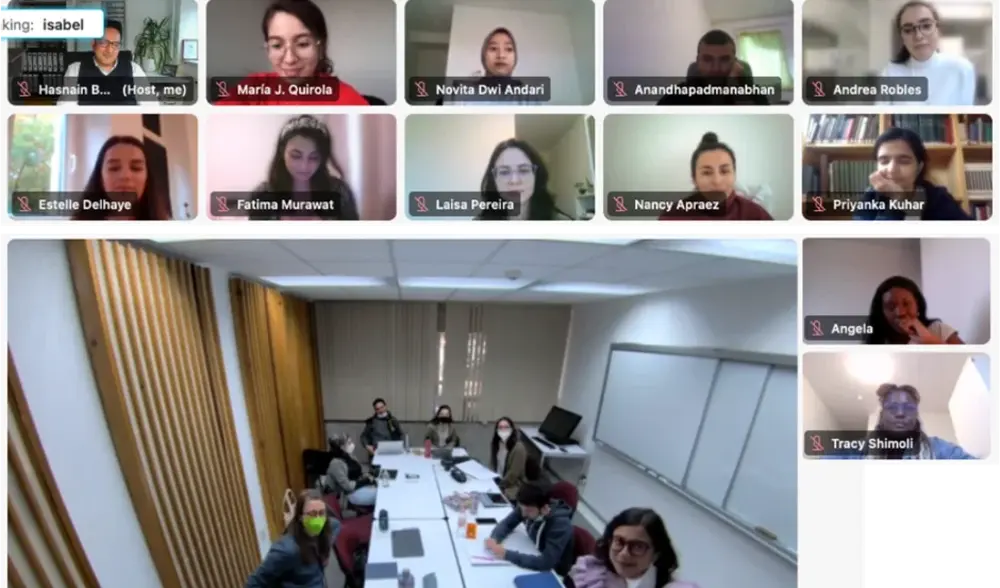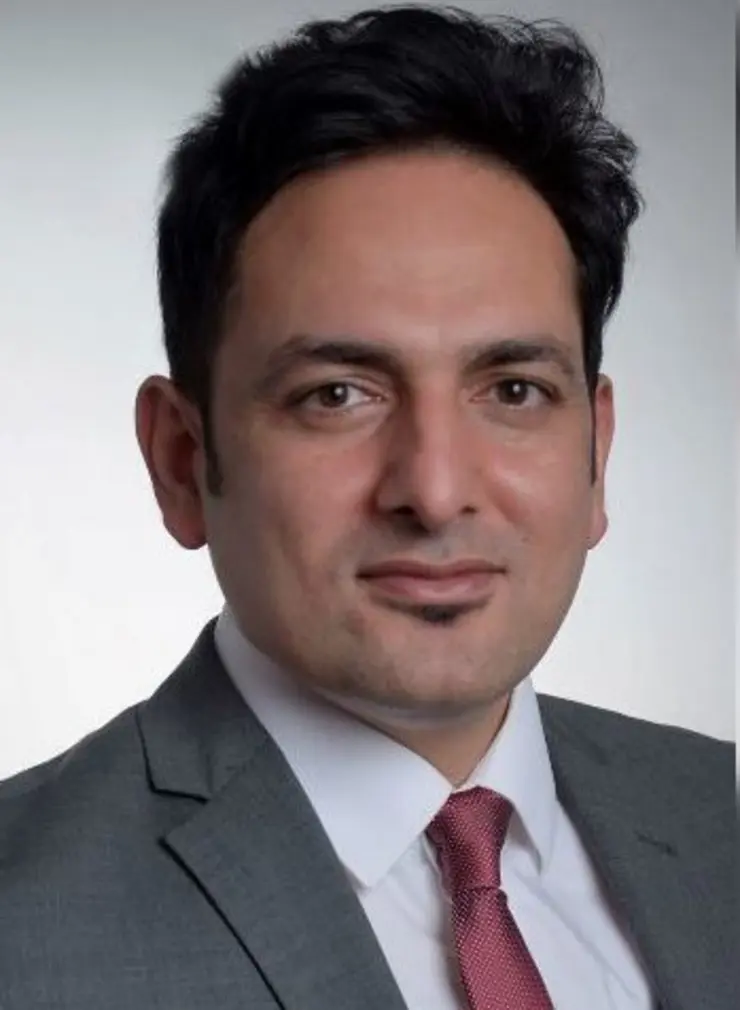A cross-cultural, inter-disciplinary experience: The COIL initiative

In the Winter Semester of 2022/2023, the Willy Brandt School of Public Policy students enjoyed a unique opportunity to engage in virtual collaboration with their counterparts at the College of Mexico through a month-long COIL activity. The COIL initiative was conceived as part of the broader "Digitalization and Internationalization of Education" project at the Brandt School with an aim to cultivate Collaborative, Online and International Learning (COIL) experiences that transcend geographical borders and promote cross-cultural connections. However, how does a COIL activity function, and what kind of preparation is necessary to create COIL tasks? How long should a COIL activity last? These are some of the questions that this blog post aims to address.
Blending Digital Learning and International Collaboration
Higher education institutions are increasingly adopting innovative approaches to promote international collaboration, broaden educational horizons and create a truly global educational experience for the students. Following the global impact of the COVID-19 pandemic, there has been a rise in digital learning tools, such as online classrooms. Given the increased focus on digital learning, there is an opportunity to blend digital learning and international collaborations to create a global educational experience for our students. During the winter semester of 2022, I had the opportunity to teach a graduate course titled "Governance and Human Rights in the Digital Age." As part of this course, I embarked on an innovative digital collaboration with the Gender Studies Department at the College of Mexico, introducing a COIL activity to engage students from both institutions. In a month-long exercise, the students of the Brandt School and Gender Studies at the College of Mexico virtually collaborated to jointly conduct a task on the topic of “Politics of Social Media Influencers”.
Exploring COIL: Bridging Borders through Collaboration
COIL is an innovative teaching and learning approach that utilises Information and Communication Technologies (ICTs) to facilitate cross-cultural and cross-border collaboration among students and faculty members[1]. The goal of COIL is to provide students with a global perspective, enhance their intercultural competence, and improve learning outcomes[2]. COIL has been gaining popularity in higher education institutions around the world because it offers a cost-effective and flexible way to internationalise the curriculum and engage students in global learning experiences[3]. In the context of internationalisation among Higher Education Institutions (HEIs), there is a growing trend to promote internationalisation at home[4]. This is particularly important for students with limited opportunities to study and travel abroad. COIL activities aim to bridge this gap by utilising ICTs and providing intercultural experiences and international curricula. Moreover, some studies also suggest that COIL initiatives align with the overarching goal of decarbonizing higher education, as they can effectively mitigate the need for physical travel, thereby tending to reduce the carbon footprint[5].
Progress has different meanings in different contexts. The COIL activity was helpful in increasing awareness about, and served as a starting point for understanding progress from different perspectives
Novita Andari (Indonesia, Batch 2022-24)
Dispelling COIL Misconceptions
A common misconception regarding COIL is that it functions similarly to a Massive Online Open Course (MOOC) or involves synchronised or joint lectures. However, COIL is, in fact, a collaborative pedagogy that entails cross-border collaboration and interaction among students from diverse backgrounds and cultures, facilitated by Information and Communication Technologies (ICTs). Within this context, students actively engage in various forms of online interaction, whether asynchronous or synchronous. COIL activities are primarily driven by a set of learning objectives aimed at cultivating global perspectives and enhancing students' intercultural competences. Similarly, there is a misconception that COIL provides limited cultural interaction compared to in-person experiences, overlooking the potential for meaningful cross-cultural engagement. While this may hold true for some, an essential objective of COIL activities is to creatively leverage ICTs to introduce intercultural elements into the activities. Likewise, COIL's objective is to incorporate a reflective element that encourages students to think critically about their interactions within this context.
A typical COIL scenario
In a typical COIL scenario, faculty members from two educational institutions collaborate to integrate a COIL activity into their respective courses. This activity may involve a joint assignment or collaborative project that requires students from both institutions to interact and collaborate using online platforms[6]. Utilising chat platforms or online forums, students have the opportunity to share their unique perspectives, insights, and cultural experiences related to the given task. As they work together to accomplish their assigned tasks, students actively engage in exploring cultural disparities, exchanging ideas, and critically examining their preconceived notions through meaningful dialogues.
Planning a COIL activity: From Design to Execution
A COIL activity can last anywhere from four weeks to a whole semester. Typically, it involves the formation of multicultural teams comprising students from both institutions who connect online to collaborate on group assignments. Broadly speaking, there are two key phases in developing a COIL activity: the design phase and the execution phase. In the design phase, two instructors from different institutions come together to discuss and create a COIL activity that can be integrated into their respective courses. Usually, these two collaborators in the COIL task are already acquainted. Importantly, they don't necessarily need to hail from the same academic discipline, and their respective courses may not overlap. Instead, it's the COIL assignment itself that embodies the essence of both disciplines. The two collaborators design their COIL activity with a primary focus on intercultural learning goals.
During the execution phase, students are introduced to the COIL task in their initial meeting, during which they also meet their counterparts and agree on meeting times and the choice of technology. The tasks to be carried out during the COIL activity are expected to be self-explanatory but often require detailed planning to ensure clarity for the students. It is advisable to clearly outline the learning outcomes and objectives of the COIL activity so that students have a clear understanding of what to expect. Since COIL activities do not involve traditional lectures and the role of educators is that of facilitators, it is crucial to provide comprehensive explanations of the tasks for each week and to identify any deliverables, if applicable, right from the outset.
COIL activity enriched our learning experience as it involved cultural diversity, allowing us to simultaneously indulge in both societal and academic discussions
Fatima Murawwat (Pakistan, Batch 2021-2023)
Collaboration with the College of Mexico
My course on 'Governance and Human Rights in the Digital Age,' covered various themes, including internet governance, the right to forget, digital citizenship, and the Politics of Social Media Influencers. The central theme of my COIL activity was Social Media Influencers. I collaborated with a colleague from the Gender Studies department at the College of Mexico to develop a COIL activity centered around this topic. Our objective was to engage students academically and foster an understanding of human rights and gender perspectives related to social media influencers. The collaborative learning experience spanned four weeks and involved a total of 18 participants—11 students from the Willy Brandt School of Public Policy and seven from the College of Mexico. To facilitate interaction and discussion, we divided the students into four groups, each comprising 4-5 students. Meetings were organised using common video-conferencing technology, each lasting approximately 60 minutes. Students took on various roles, including organising, conducting, moderating, and setting the agenda for each meeting. Task allocation was equally distributed among team members, ensuring shared responsibilities. The final 15 minutes of each session were dedicated to discussing key takeaways from the day's presentations.
What I liked about the COIL activity was to explore the intersectionality of two disciplines: Gender Studies and Public Policy
Angela Zawedde (Uganda, Batch 2021-2023)
Key Takeaway from the COIL activity
COIL activities require careful advance planning due to the multitude of details that need to be addressed. For example, universities often operate on different semester rhythms, and time zone differences can be a critical factor when coordinating online student meetings. Instructors should also consider assigning credits for the COIL task as an incentive to encourage student participation.
From the very first day, students from both institutions displayed a strong affinity for the COIL activity. They transitioned from focusing on intercultural aspects to delving into more subject-specific details. The participants brought diverse educational and cultural backgrounds to the table, allowing for enriching discussions on their core academic interests and reflections on gender norms in their respective countries. What resonated with the students was the diversity within the group, and, more significantly, they recognised the unique learning experience that emerged from the intersection of two distinct disciplines: Gender Studies and Public Policy.
COIL activities open up endless possibilities for online collaboration between institutions and their students. I am deeply grateful to my collaborator, Dr. Isabel Gil Everaert of the Gender Studies Department at the College of Mexico for our successful and joint implementation of this activity.
References
- The State University of New York (SUNY), “Collaborative Online International Learning (COIL) Center.” [Online]. Available: https://coil.suny.edu
- A. Naicker, E. Singh, and T. van Genugten, “Collaborative online international learning (COIL): Preparedness and experiences of South African students,” Innov. Educ. Teach. Int., vol. 59, no. 5, pp. 499–510, 2022.
- K. Wimpenny and M. Orsini-Jones, “Innovation in collaborative online international learning: A holistic blend,” in Radical Solutions and eLearning: Practical Innovations and Online Educational Technology, D. Burgos, Ed., Springer, 2020, pp. 1–25.
- H. Watkins and R. Smith, “Thinking globally, working locally: Employability and internationalization at home,” J. Stud. Int. Educ., vol. 22, no. 3, pp. 210–224, 2018.
- P.-T. Nikula, A. Fusek, and A. van Gaalen, “Internationalisation of Higher Education and Climate Change: A Cognitive Dissonance Perspective,” J. Stud. Int. Educ., p. 10283153221145082, 2022.
- P. Munoz-Escalona, Z. C. de Crespo, M. O. Marin, and M. Dunn, “Collaborative online international learning: A way to develop students’ engineering capabilities and awareness to become global citizens,” Int. J. Mech. Eng. Educ., vol. 50, no. 1, pp. 89–104, 2022.
About the Author

Dr. Hasnain Bokhari is a postdoctoral fellow at the Willy Brandt School of Public Policy, University of Erfurt in Germany. He currently leads a project on the Internationalisation and Digitalisation of Education at the Brandt School and his research focuses on eGovernment, digital inclusion, the digital divide, and social media analytics. He is also an Associate Editor of the Journal of Entrepreneurship and Public Policy and holds a Ph.D. and MA in Public Policy from the University of Erfurt.
~ The views represented in this blog post do not necessarily represent those of the Brandt School. ~